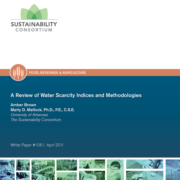HSBC Centre Paper – Improving Supply Chain Resilience to Manage Climate Change Risks

| Author(s): | [doc_author] |
| Date Published: | [doc_create_date] |
| Projects: | [projects] |
| Number of Downloads | 2596 |
| Size | 2.39 MB |
| File | Action |
|---|---|
| HSBC Centre Paper - Improving Supply Chain Resilience to Manage Climate Change Risks.pdf | Download |
Executive summary
Supply chain executives and managers contend with supply disruption risks as part of their role. A company’s supply chain needs to deliver in a consistent and reliable way in order to meet the demands of the company’s customers and manage supply chain costs. Climate change and its consequences, however, are likely to make managing supply disruptions more challenging. Existing acute risks that cause supply disruption, like extreme weather events, will become more severe, frequent, and widespread. Chronic risks like sea-level rise will create new challenges, including risks due to transitions to new supply chain configurations. In order to better prepare for the future, companies can consider formally incorporating climate change risks as part of the supply chain risk management strategy. A company has two strategies to enhance supply chain resilience: bridging and buffering. Bridging strategies enhance the capability of a supplier to withstand risk events and recover more quickly from a disruption. Bridging strategies include engaging in collaborative planning and control with suppliers, providing suppliers financial support and developing strong supplier relationships.
Buffering strategies protect the company from inevitable supplier failures and supply disruptions. Companies can use inventory buffers, lead time buffers, capacity buffers, liability buffers, and cost buffers to make their supply chain more resilient. A supply chain organization can also intentionally work to develop the culture, processes and discipline of a high reliability organization to provide the foundation for a resilient supply chain. Attention to climate change risks will not only make the company’s supply chain more resilient but may make the company more attractive to its employees, customers and investors. The purpose of this report is to help companies understand why climate change risks should be addressed within a supply chain risk management program and discuss the options that companies have to create greater supply chain resilience.






